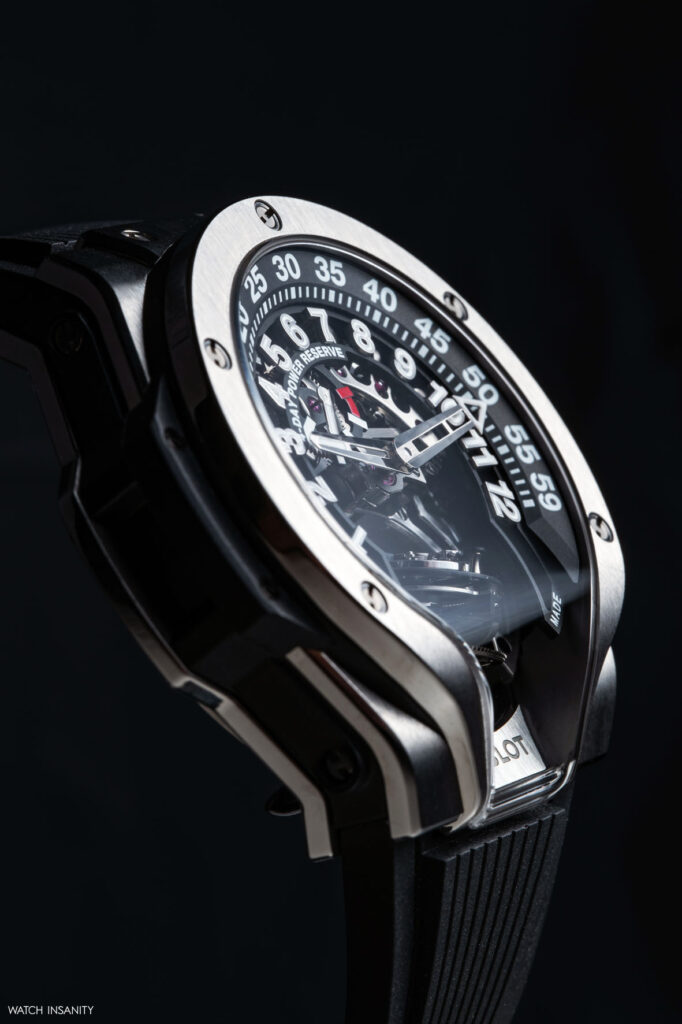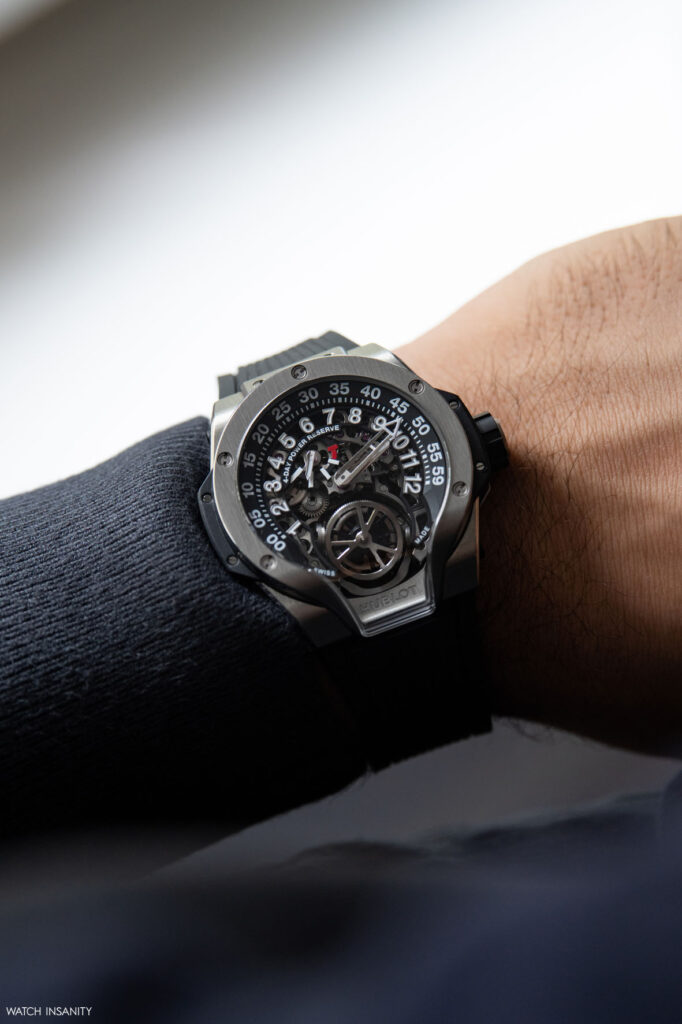Hublot MP-13 Tourbillon Bi-Axis Retrograde: a fusion of complications
20 September 2023You can say anything about Hublot, except that it lacks technical excellence or awareness of its resources. A brand that calls its most extreme collection MP – where the two letters stand for “Manufacture Piece” but also for “MasterPiece” – demonstrates great self-assurance and is clearly confident in its ability to create watches which will become cult objects by virtue of their mechanical, engineering and stylistic uniqueness.
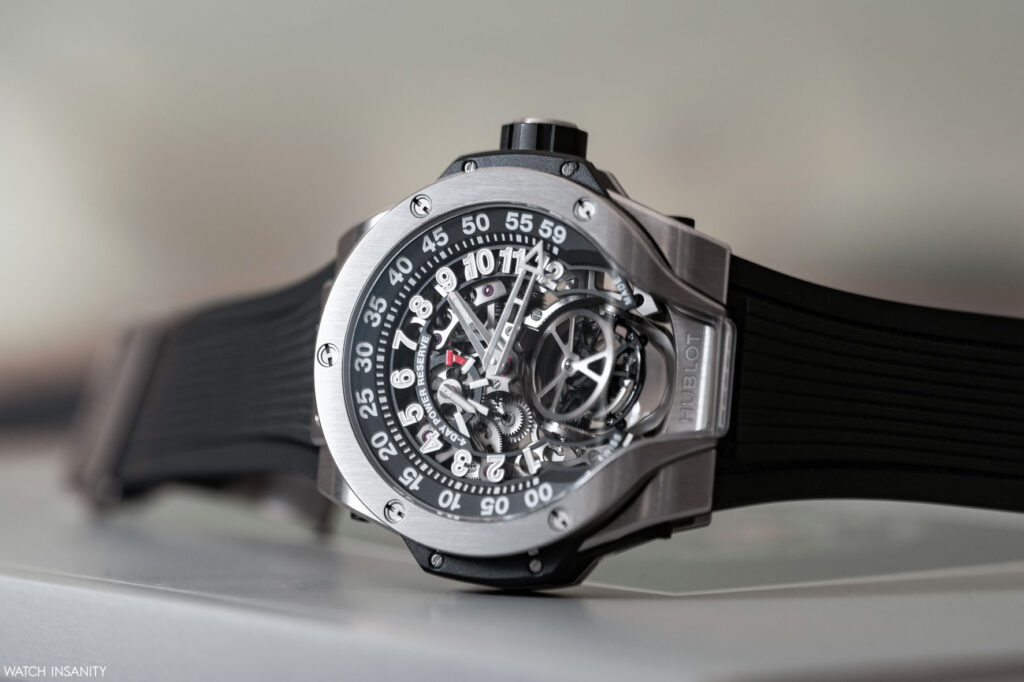
THE MP COLLECTION
MP-05 LaFerrari, MP-09, MP-11 are timepieces that, upon their release, impressed for their technical solutions, for their design, and for the materials they are made of. Think of the 50 days of power reserve of the MP-05 LaFerrari or the 14 days of the MP-11, performed by seven series-coupled barrels.
That’s without mentioning the materials that distinguish them, from the Red Magic ceramic to the sapphire of the MP-05 LaFerrari, whose transparency highlights the caliber, inspired by the engines of Maranello’s racing cars. These are watches in which the technique and design stand out at the expense of readability and also in part wearability, but which demonstrate what Hublot is made of.
From a mechanical point of view, the biaxial tourbillon that made its debut on the MP-09 also stands out. A technical excellence that found its place in the HUB9009 manual caliber. A beating heart with 21,600 vibrations/hour, 356 components, 43 jewels, 5 days of power reserve and, indeed, a biaxial tourbillon at 6 o’clock, with two axis, which completes a full rotation every minute on one axis, and every 30 seconds on the other. Biaxial Tourbillon is also the protagonist of our exclusive shooting, with the MP-13 Tourbillon Bi-Axis Retrograde.
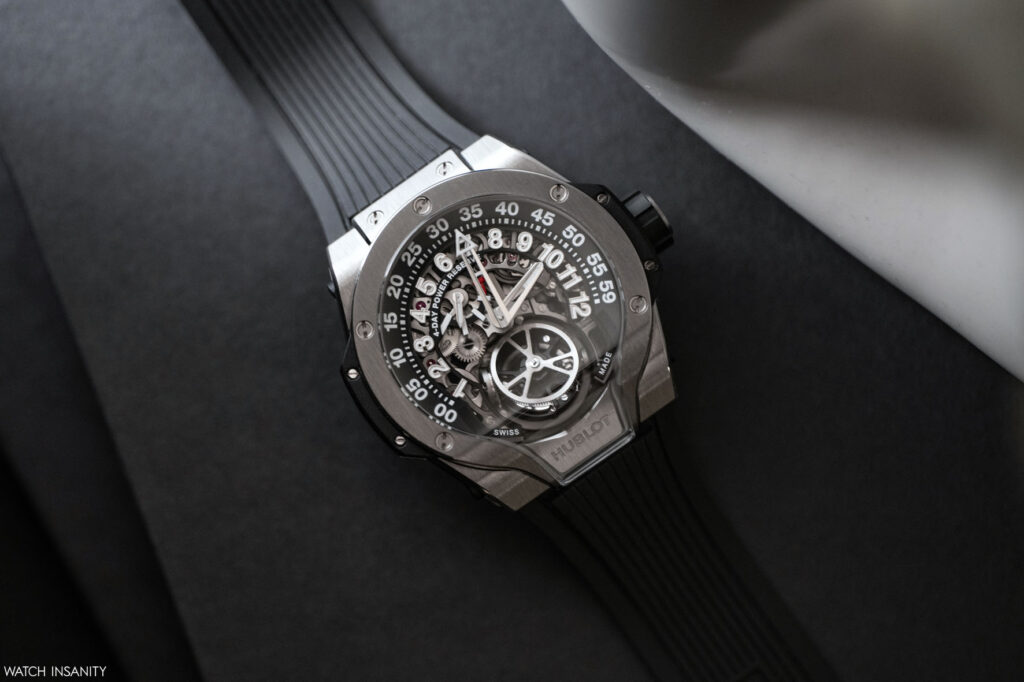
This time, Hublot has combined a very high-quality tourbillon with a retrograde time-indication mechanism, putting two complications together. Each of them, as we will see, is the prerogative of only the most innovative and daring watchmaking brands.
THE BIAXIAL TOURBILLON
Let’s start with the biaxial tourbillon, which is certainly not a Hublot exclusive but which puts the Nyon brand in good company. Vacheron Constantin, Girard-Perregaux, Harry Winston: those are just some of the brands that have developed it for their most precious collections. And this gives a good idea about how Hublot has positioned itself in just over 40 years of life.
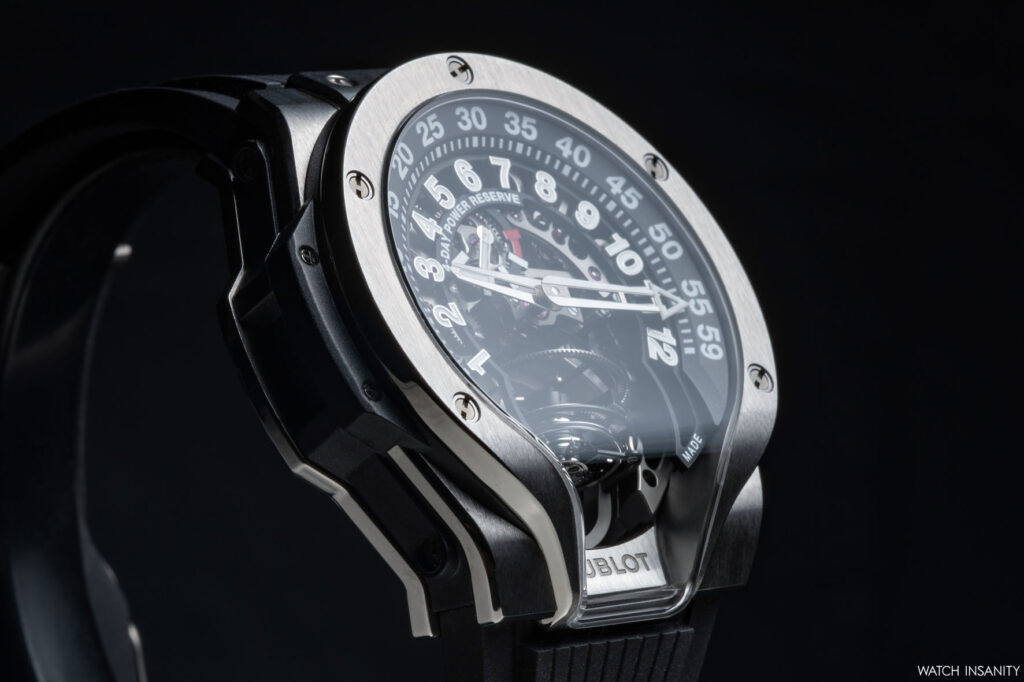
The biaxial tourbillon is composed of an inner and an outer cage. They are concentric, so as to rotate in multiple directions and thus compensate for the irregularities of the movement caused by the Earth’s gravity. The adjustment system is decentralized and performs a complete rotation in one minute around the axis passing through the rotation axis of the balance wheel. A 30-second rotation around a second axis occurs simultaneously.
On a biaxial tourbillon, the second axis rotates parallel to the dial and influences the speed with the watch’s dial facing both up or down. So, the mechanism has a positive influence on the accuracy rate in all six positions.
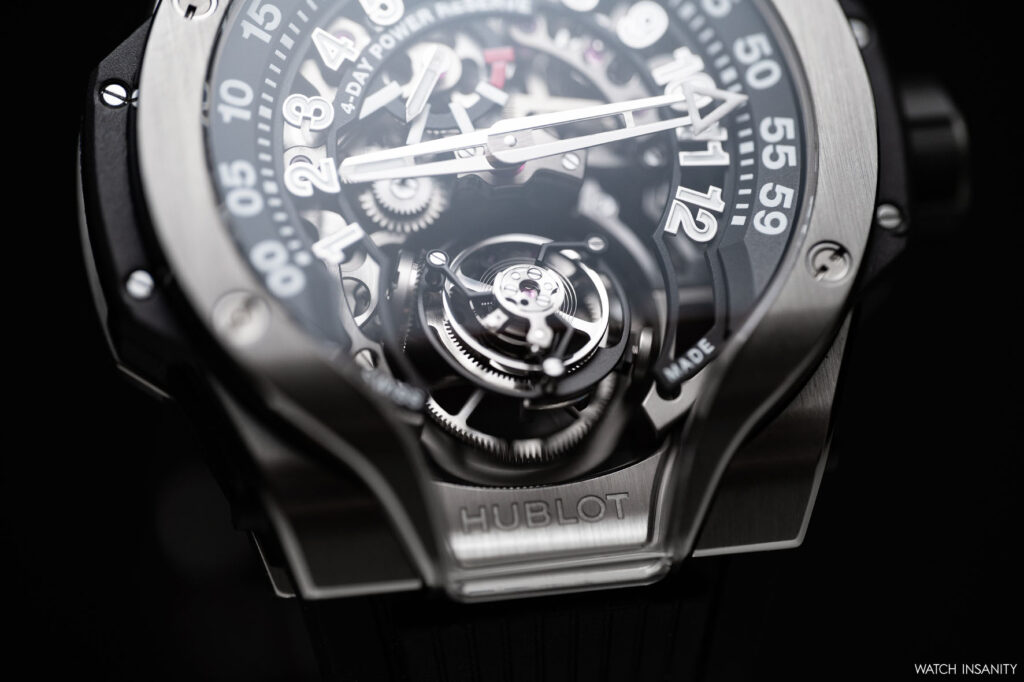
In the 1970s, English watchmaker Anthony G. Randall invented a tourbillon that rotated around two axis. His creation, probably more of an intellectual challenge than an experiment to improve the precision of chronometry, took the form of a large table clock.
Since the double-axis mechanism can only reach its full effectiveness in portable watches, the Swiss watchmaker Thomas Prescher created such a mechanism for a pocket timepiece, to test its feasibility for a wristwatch later. A direct reduction in size and the same arrangement of components proved impossible.
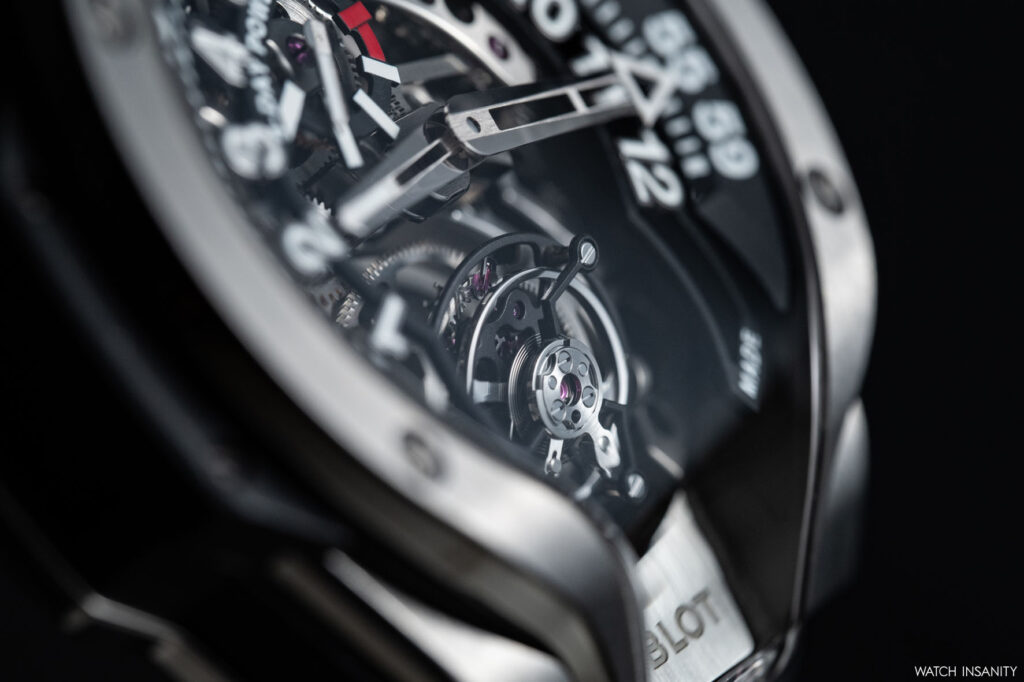
Problems with weight distribution, gears and friction between the micromechanical parts led to quite different responses compared to Randall’s large clock, as the smallest part of the new mechanism weighed only 0.0009 grams. Therefore, the biaxial tourbillon had to be completely redesigned, especially since it was supposed to be a flying tourbillon.
THE RETROGRADE HOUR INDICATION
This re-designing effort was then seen in contemporary biaxial tourbillons, including the one we find on the Hublot MP-13 Tourbillon Bi-Axis Retrograde. Which however, as the name suggests, is also retrograde. A fascinating and ancient complication.
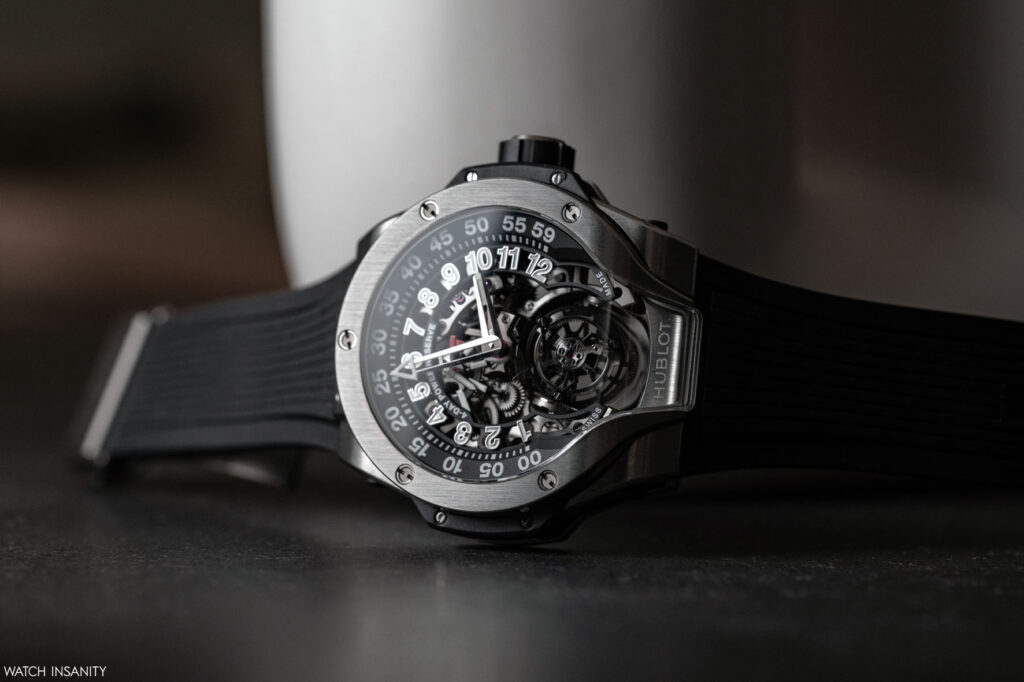
While most watches have a classic time dial, with a hand rotating around an axis of 360 degrees, retrograde watches appeared in the 17th century, when some watchmakers invented another display mode: the hour hand ran on an arc for half a day before returning to its starting point and continuing its race.
In the 18th century, this system was used by Abraham-Louis Breguet for specific functions such as the date or the equation of time, before losing its appeal over the years. It was at the end of the 20th century, when Swiss watchmakers rediscovered the beauty of the mechanical movement in the 1990s, that the retrograde watch became the talk of the town again.
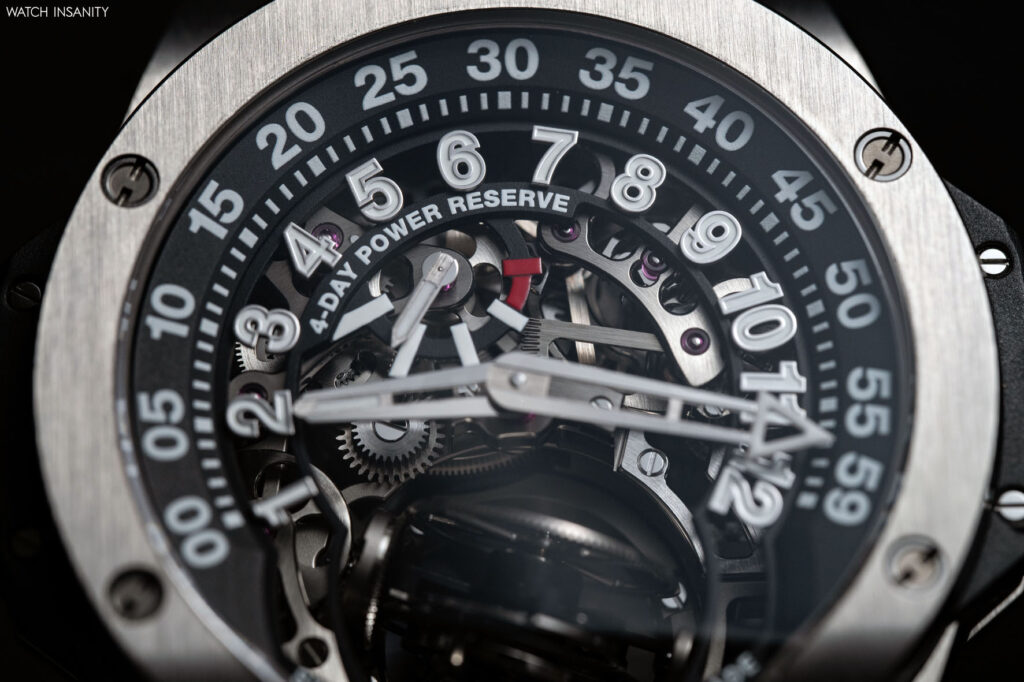
With this complication, the hours and minutes are not placed around the dial over 360 degrees, but over an arc showing the 60 minutes and the 24 or 12 hours. When the hand reaches the end of the arc – at 60, 24 or 12 – it snaps back to its first position, and the counting starts all over again.
The retrograde system is not considered revolutionary in watchmaking: the general architecture of the movement remains the same. The difference stands in the reading of time, as the wearer of the watch only sees the fascinating final result. The watch is actually equipped with a complex mechanism made up of cams, rakes and springs, which allows the hands to instantly return to their initial position.
This is no small feat, because the energy accumulated by the springs as the hands continue their journey must be powerful, in order to make them return to the starting point once released. At the same time, however, this tension must not be too strong, to avoid shocks to the movement or damage to the hands themselves. This is the reason why, on the most ‘extreme’ retrogrades, the hands are made of titanium, a super light and super resistant material.
MOVING ON TO THE MP-13 TOURBILLON BI-AXIS RETROGRADE
Retrograde with a biaxial tourbillon. This is why the MP-13 Tourbillon Bi-Axis Retrograde is a truly remarkable piece. On which to focus starting from the tourbillon positioned at 6 o’clock. Its two axis perform a whole rotation every 60 and 30 seconds respectively; thanks to a skeletonized and suspended structure, its integrated design gives the tourbillon a lightness which can’t be found in more traditional watches.
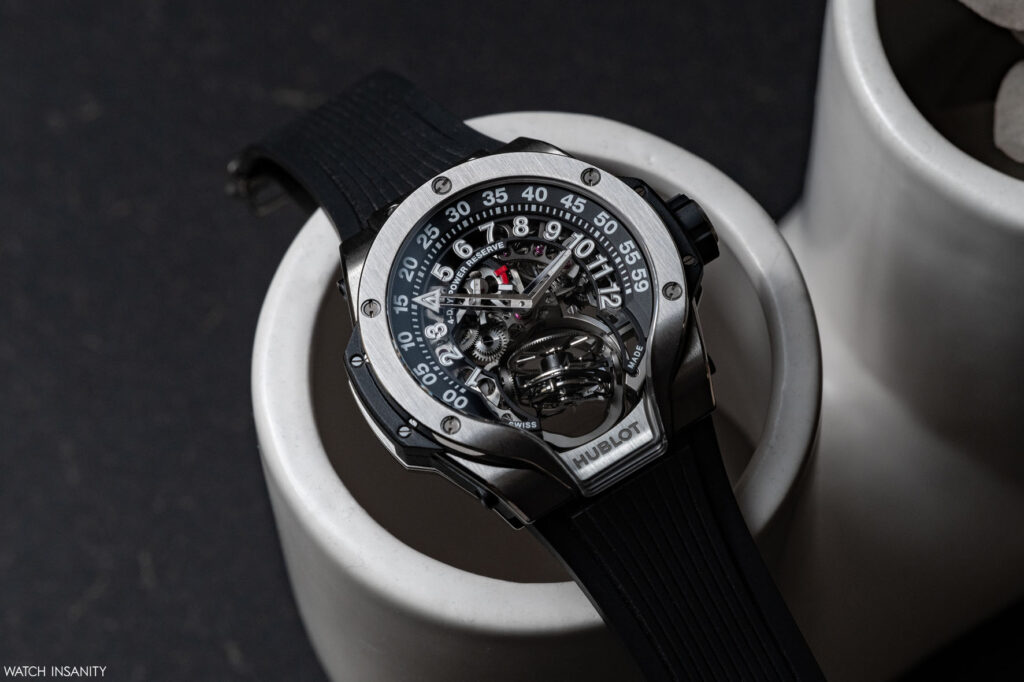
A result achieved both by completely eliminating the upper bridge (remember that a biaxial tourbillon must necessarily be flying), and by cutting the number of components to the bone. In this way, the light passes through the tourbillon without encountering any obstacle. To further amplify this feeling of lightness, the surrounding area is open, protected on both sides by an anti-reflective sapphire crystal.

The rest of the dial presents a dual retrograde display, with the hours and minutes designed like a speedometer and tachometer. As well as being biaxial, the watch is also bi-retrograde, with a different movement for the hour hand and the minute hand, both skeletonized. The latter is constantly on the move, while the hour one automatically switches from one number to another, allowing the wearer to read the dial more easily.
THE DIAL
Speaking of the dial, its structure is made up of different levels. If the minute track arc is designed along the inclined rehaut, the hours one is at a slightly lower level, with the indexes resting on a black and matt skeletonized bridge, which gives the impression they are floating. Right below is the last level, with the arc and the power reserve indicator hand at 11 o’clock, and full view of the HUB6200 in-house caliber.
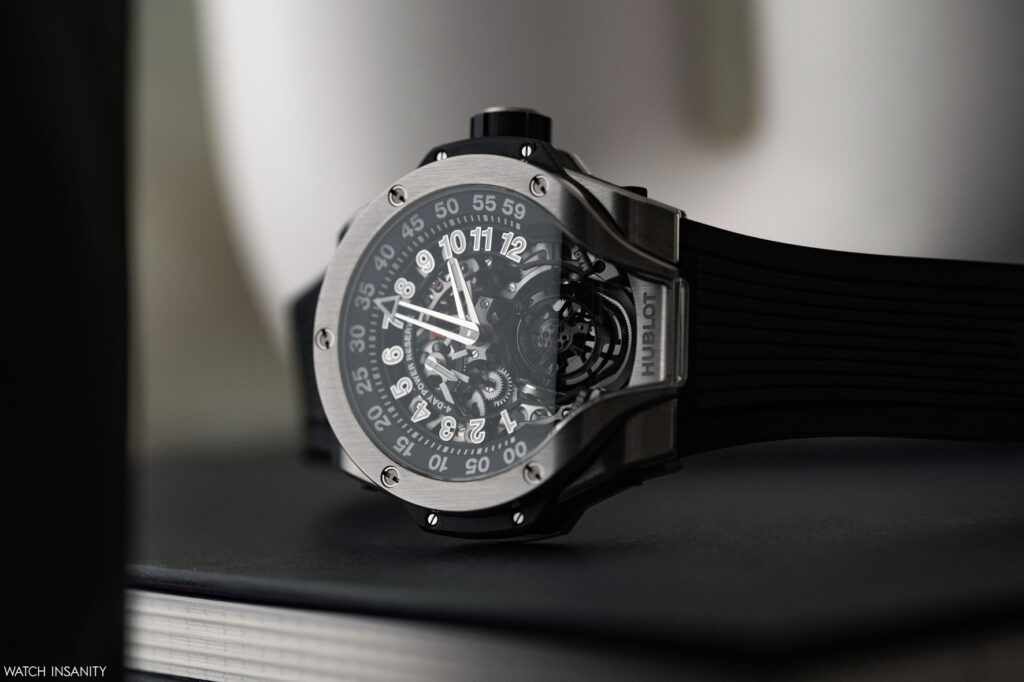
It is a hand wound caliber whose performance is remarkable. After all, as we wrote above, managing a double retrograde indication requires a lot of energy. This is why the 96 hours of power reserve are prodigious – also considering the various technical prowesses that characterize the HUB6200.
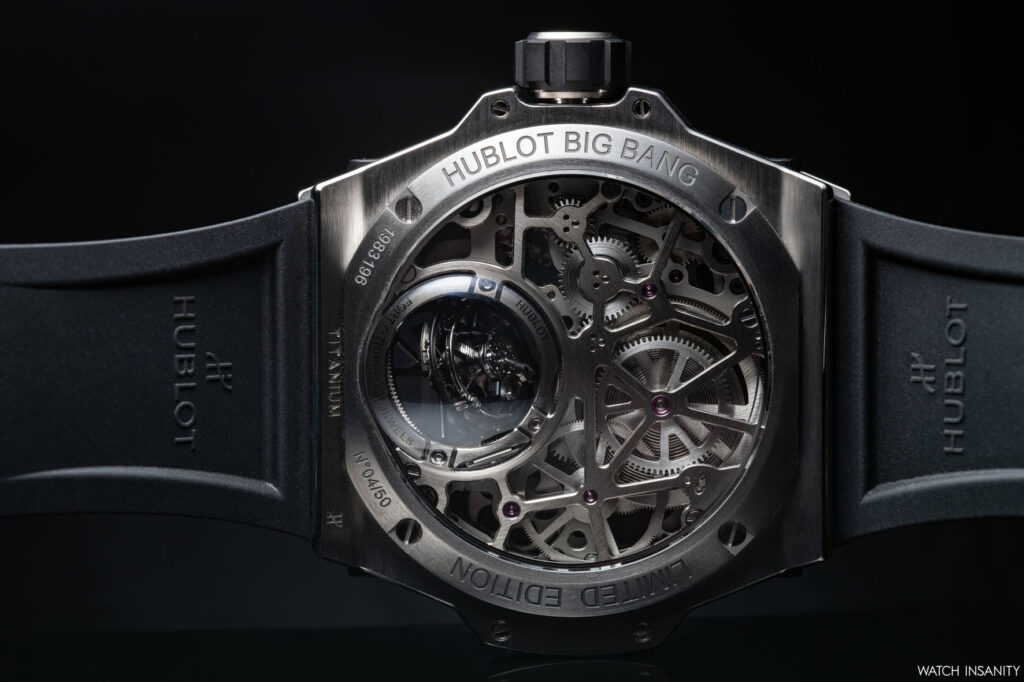
The movement is very easy to set, since the crown has only one position. Adjusting the minutes automatically moves the hour hand as well, and the movement can only be wound forward. A precaution that prevents damage caused by moving the hands backwards, a common weakness to all mechanisms with retrograde movement.
CLASSIC AND MODERN AS ONE
The case is of generous dimensions, as expected from Hublot and, specifically, from a watch like this: 44 mm in diameter and 16.7 mm thick. It is entirely made of satin-finished titanium, so are the case back and bezel, and is waterproof up to 3 bars. It is open at 6 o’clock, where the bezel gives way to the extension of the anti-reflective sapphire crystal, in order to fully highlight the tourbillon at work. The watch is completed by the classic black lined rubber strap (Hublot’s aesthetic signature) with a folding clasp also in titanium, like the case.
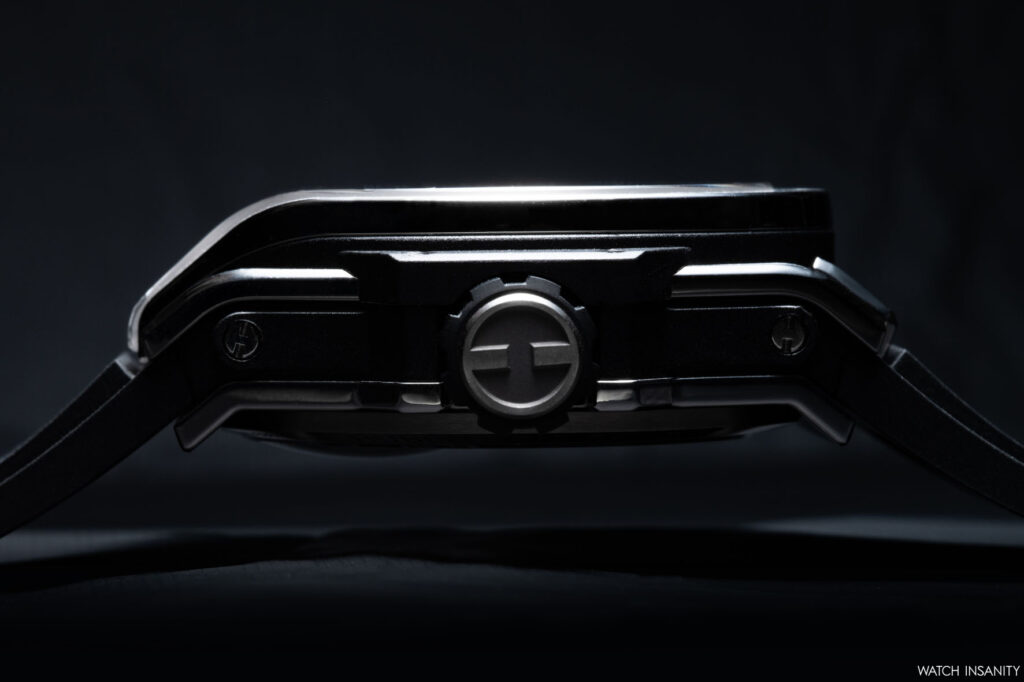
As we can expect from a piece of the MP collection, the MP-13 Tourbillon Bi-Axis Retrograde is also made in a limited edition: 50 pieces, at a price of 165,000 euros each.
In our opinion, this watch winks at a more traditional enthusiast while maintaining all the excellent characteristics of the MP collection. The choice of the retrograde indication is already a tribute to watchmaking from a classic past era. Furthermore, while maintaining an original design, the timepiece is far from the extreme and bold cases of pieces such as, for example, the MP-05 LaFerrari or the MP-09.
Hublot probably wanted to mix past and future, in an ultimately contemporary watch. And they succeeded very well. Isn’t the brand a master of the art of fusion after all? Here it is, embodied in the MP-13 Tourbillon Bi-Axis Retrograde.
By Davide Passoni





